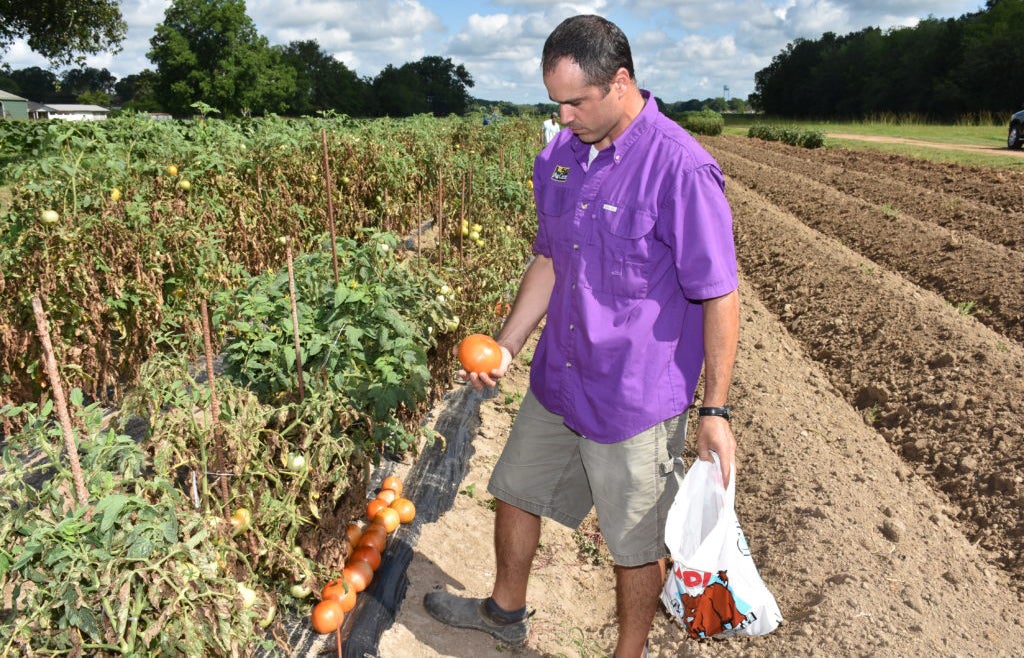Ready, Set, Grow!
Published 12:00 am Wednesday, March 17, 2021
|
Getting your Trinity Audio player ready...
|
I’m behind schedule writing my column again, staring at warm sunny skies that tell me I’m behind schedule planting the vegetable garden, too. March 15 is a traditional planting date in the River Parishes; our “average last frost date” is actually February 21. An early start may amount to bragging rights for the first tomato among friends. It most commonly amounts to getting your best harvest before bugs and heat make life miserable for man and plant alike.
If you’re planting a new area, it’s recommended to apply herbicide like glyphosate at least 14 days before planting. For sensitive crops like tomato and okra, 30 days is better. If you’re in a hurry, think inside the box with container gardens.
Raised beds are nothing new. Rows in a traditional in-ground garden can be considered a temporary raised bed, as their purpose is to keep plants up out of the muck. Our alluvial (river-deposited) soil is famously rich but also tends toward clay. Raised beds can help you rise above saturation from our frequent rains. All sorts of designs exist (Pinterest, anyone?) for all sorts of budgets.
I lean toward inexpensive and simple. An 8×4-foot bed can produce plenty of fresh vegetables for a family. Most arms can reach about two feet in from either side, allowing access to the whole 4-foot width. Make them as long as you want but 8-foot boards are easily found and make a neat rectangle. Be sure and leave space between boxes for wheelbarrows and lawnmowers to pass.
What kind of boards should we use? Cedar and cypress resist rot, look nice and can even smell good. But they tend to be more expensive than pine. If you use pine, be sure and get the treated kind. The lumber industry switched from arsenic to copper treatments years ago due to concerns from vegetable gardeners. Neither has been found to leach into the soil and be picked up by plants but we feel safer with copper anyway.
How about thickness and depth? The roots of most garden vegetables will use the top 3 to 4” of soil. Deep-rooted crops like carrots may reach as far down as 8 inches. So 2X8-inch or 2X10-inch boards laid on their sides are plenty deep and sturdy enough. Use brackets or braces at each corner, or the boards will bow and bend over time. There are 101 solutions and styles to do this at the hardware store. Be prepared to spend nearly as much on brackets as the boards themselves cost but this is an important step if you want the beds to last.
You can fill the beds with bagged potting soil for convenience but it’ll probably cost more than bulk soil. A few businesses in our area will fill the back of a pickup inexpensively. One “yard” (roughly a pickup bed full) is enough for a little more than one 8X4 foot bed as described above. Fill it as much as you can since the soil will settle and organic matter will decompose.
For an even quicker garden, you might use window boxes or hanging baskets. Bigger is better; a five-gallon bucket can host a cucumber or small cherry-type tomato. Try smaller varieties like ‘Patio Snacker’ cucumber; or ‘Tumbling Tom’ and ‘Sweet 100’ cherry tomatoes. It’s best to use slow-release fertilizer in containers since it’s easy to “burn” plants with 13-13-13 in a pot!
If you want to know more about gardening, landscaping or anything else horticultural, contact the St. John & St. James Parishes County Agent André Brock at abrock@agcenter.lsu.edu. Also, the LSU Ag Center’s website can be accessed at www.lsuagcenter.com with lots of user-friendly information, including this article.





